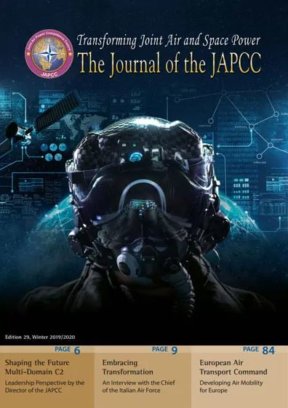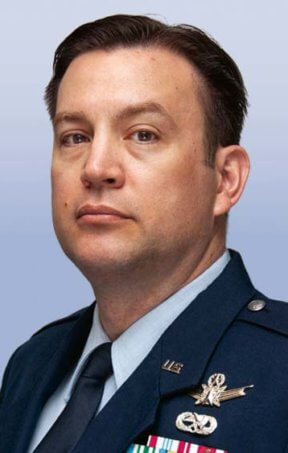‘You keep using that word. I do not think it means what you think it means.’
Inigo Montoya8
Introduction
The classic line above from The Princess Bride is in response to one of the characters, Vizzini, repeatedly declaring ‘inconceivable!’ during a series of events which in the outcomes are not only conceivable but accomplished through some ingenuity by the hero, Westley. One of Vizzini’s accomplices, Inigo, having heard the exclamation multiple times delivers the line in an effort to be both helpful and humorous. Unfortunately, an increasing number of NATO military members are taking part in professional conversations on a daily basis using terms about which they possess as little understanding as Vizzini about the word ‘inconceivable’. Chief among the current list of readily-used yet misunderstood terms is Multi-Domain Operations (MDO). Indeed, the pursuit of understanding of the meaning of this term was sufficient for the Joint Air Power Competence Centre to select MDO as the theme for their flagship conference which took place in Essen, Germany the 8th–10th of October 2019.1
The challenges to understanding MDO begin with a lack of a clear, agreed-upon definition of the term itself, and what the concept entails for the military planners and operators who must prepare for and undertake such operations. To better understand what is meant by MDO we must examine the origins of the term, what the term means (or could mean) and, finally, what the term means for modern militaries in the future.
Part One
The conversation begins with where, or perhaps why, the term first came to be utilized. Modern militaries, particularly those within NATO, have for decades used the term Joint when discussing operations coordinated across multiple domains (land, sea, and air). However, Joint2 Operations is a term and concept rooted in operations involving more than one service (army, navy, and air force). The term MDO differs from Joint Operations in that it is intended to focus on operations across multiple domains regardless of service affiliation, not necessarily on those conducted by multiple services. This new term originated from the need to describe operations which included those domains lacking definitive service representation. Specifically, the United States Air Force (USAF) views Multi-Domain as those operations in the air, space and cyberspace domains conducted by members of the USAF,3 while the United States Army considers MDO as the way it ‘can counter and defeat a near-peer adversary capable of contesting the U.S. in all domains’.4 However, the incorporation of MDO into the common lexicon did not change the nature of the operations, or even the perceptions of operators, nor was there a demonstrable change in the services’ willingness to operate outside of their given service-centric domains.
The reality is that today’s modern military operators, with extremely few exceptions, rely on capabilities in other domains as they execute military operations in their own primary domain. This is true in so many modern military operations that it is difficult to think of operators who execute operations solely in a single domain, without support from capabilities in other domains. What is needed, then, is a term which allows military members to speak in terms greater than merely synchronization and coordination. If militaries are to truly enter an era of MDO, the concept must be endorsed and practised by operators who are actually operating in multiple domains simultaneously. This will be a significant paradigm shift from today’s operations which, by and large, focus more accurately on merging operations of single domains while coordinating activities with operators focused on their domains. To realize this new reality military professionals will need to ensure they have a clear understanding of, and agreement on, the terminology, and that they incorporate the technology which will allow those operators to plan and conduct MDO.
Defining MDO
All agree the term ‘multiple’ refers to more than one. The issue becomes complicated when military professionals attempt to reach agreement on the meaning of the term domain, at least with regard to military operations. The term ‘domain’ is utilized through military writing today, and yet the term lacks an agreed-upon definition within the military context. The only way military members treat a domain officially is after acknowledgement of the said domain by political leaders. However, this gives military professionals only a politically acceptable definition, which may differ from the reality within which those same professionals must plan and operate. Lastly, the term domain has numerous connotations outside of the military construct, and so the military is in need of not only clearing defining domain for itself, but also ensuring the term is differentiated from usages outside of the military context. Therefore, this article proposes that the term ‘operational domain’ be employed. This term is derived from NATO’s use of ‘domain of operations’ in recognizing cyberspace during the Warsaw Summit in 20165, with the following working definition:
Operational Domain: An unique area of territory or interest in which a military force can execute the joint functions (intelligence, information, command and control, fires, movement and manoeuvre, protection, and sustainment)6 in pursuit of mission accomplishment. Operational domains can be further divided into operational environments, which are subsets which require special (although not wholly unique) considerations (e.g., land is an operational domain, with forest and desert operational environments).
It is worth noting there are other recommendations for a military definition of the term domain. Indeed, Dr. Jeffrey Reilly (Multi-Domain Operational Strategist Program Director at the USAF Air Command and Staff College) has proposed that a domain is a ‘critical macro manoeuvre space whose access or control is vital to the freedom of action and superiority required by the mission’.7 The objective here is not settling the discussion with regard to how to define the term domain, rather compel a decision on a military-applicable definition that military professionals can all utilize moving forward. Still, for this article, a sufficient definition is available to explore those operations which would encompass capabilities used across multiple domains or MDO.
Focus of MDO
The focus for MDO should be on the military operator(s), executing operations in multiple domains simultaneously. Military professionals must differentiate, in our minds, conversations and writings, between the operator who is operating in multiple domains (both manoeuvring and firing, in particular) from the operator who is operating in one domain while using support (sustainment, intelligence, command and control) from another domain as a utility … the first is an example of a Multi-Domain operator, and the second is, in reality, a Service, or perhaps, Joint Operation. An underlying principle is that all domains within the modern military construct are interdependent; discussions of the level of dependence or interdependence amongst domains are distracting and provide no real benefit to the further development of military thought.
Wargaming
As stated previously, there are currently few examples of Multi-Domain operators in the military, as most military members concentrate on operating within in a single domain while utilizing capabilities from other domains as support or utility mechanisms. To better understand the concept of MDO across a larger audience an analogy is useful … consider video games. One popular type of video game today is referred to as a first-person shooter. In these games, the player (operator) controls an avatar which moves through the game world executing various tasks (operations). These tasks might be accomplished while using a handheld weapon, driving an armoured vehicle, or piloting a craft across the water, in the air, or even in space. These games capture the concept of single domain operations rather succinctly, with the player operating in one domain and potentially utilizing capabilities of other domains for support (wireless communications, air support, etc.).
However, there is another genre of game referred to as real-time strategy games. In these games the player has limited direct (tactical) control over individual weapon systems, rather the player controls types of units in concert (operational control). Moreover, the player is often responsible for collecting resources, building centralized operating locations and generating the various units under the player’s control (sustainment and protection). The player (operator) must not only possess an understanding of the various functions, operational capabilities, and domain-unique characteristics of the various capabilities under his/her control, he/she must synchronize actions and fight in the various domains for some level of control. This analogy for MDOs, if accepted, raises questions about developing capabilities to allow this type of operation, the development of the military members to execute such operations, and even the potential to redefine the concepts delineating command and control at the tactical and operational levels.
For the moment, this article will leave the capabilities to be developed (autonomous vehicles and artificial intelligence will continue to develop and improve) and the issues surrounding tactical versus operational command and control alone. Others are already extensively looking at multi-domain command and control, in some cases having skipped over the issues covered in this article. Instead, this article will turn to consider the professional development of the future Multi-Domain operator.
MDO in NATO
The manner in which NATO nations currently grow and develop members of their military is generally focused on tactical competency and depth within one of many specific weapon systems. The associated processes have been developed and refined over the millennia in professional standing militaries around the world. In more recent years there has been a push to develop, in some (particularly at the Field Grade Office [FGO]-Level), a degree of operational-breadth to facilitate Joint Operations. This has been perceived as necessary due to the anticipated (and realized) synergistic benefits of the combined employment of the various weapon systems utilized by the many nations. However, technological advancements, coupled with widespread use and familiarity with those same technologies, have rendered the professional military member, groomed in tactical expertise, insufficiently prepared for the needs of the modern and future battlefield. Professional military members are now (and will increasingly be) required to have tactical depth and a degree of breadth at all levels (strategic, operational, and tactical) to enable them to operate in multiple domains simultaneously and in a manner to best achieve mission objectives. This presents challenges for militaries organized by function or domain, specifically in terms of freedom of manoeuvre as well as command and control. It also presents challenges for nations who are developing these professional warriors uniquely within each service and in dissimilar fashions in search of (what should be) increasingly similar results.
Conclusion
Moving forward into an era of MDOs, at least in terms of capability development, military professionals must ensure the lexicon evolves to accommodate and encompass new ideas and new concepts instead of merely creating new terms for old ideas. With regards to MDO, this presents the possibility of a significant change in the way in which militaries approach operations, and prepare their operators. For this to happen, military professionals must discard tired arguments involving which domains are more crucial and must reach an agreed-upon definition for terms, many of which are already in daily use. Failure to do so will impede the growth of military concepts which will be crucial in the battlefields of tomorrow and will risk creating innumerable Vizzini’s unable to comprehend the competitions and conflicts they face.












